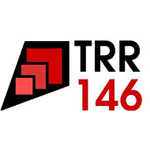
Seminar über Theorie der kondensierten Materie / TRR146 Seminar
Jan. 24, 2012 at
1:15 p.m.
in
Newton-Raum (01-122, Bau 2.413)
F. Schmid
friederike.schmid@uni-mainz.de
P. Virnau
virnau@uni-mainz.de
L. Stelzl
lstelzl@uni-mainz.de
Density functional theory modelling of the metal oxide water interface
Prof. Michiel Sprik (University of Cambridge, UK)
The interface between a metal oxide and an aqueous solution is a complex environment controlled by the exchange of charge between solid and electrolyte. Coordination with the positive metal ions increases the acidity of adsorbed water which at high pH leads to deprotonation and the build up of negative charge. Alternatively basic oxygen sites on the surface can become protonated at low pH. Metal oxides can also exchange electronic charge with the electrolyte if the metal ions are redox active.
Examples are transition metal ions. If the solid is a conductor the exchange of electronic charge can be controlled by an applied voltage.
Modelling these processes is a major challenge for electronic structure calculation. In this talk we will outline the density functional theory based molecular dynamics methodology we have developed to meet this challenge using the calculation of the pH of zero proton charge, the potential at zero electronic charge and electric double layer capacitance of a small set of related model oxides (TiO2, MnO2, SnO2) as validation.
As an application we discuss the thermochemistry of the creation of hydroxyl radicals at the TiO2/water interface.
Selected references:
M. Sulpizi, M. Sprik, Phys. Chem. Chem. Phys. 10, 5238 (2008).
- J. Cheng, M. Sprik, J. Chem. Theory Comp. 6, 880 (2010).
- J. Cheng, M. Sprik, Phys. Rev. B, Rapid Comm. 82, 081406(R) (2010).
- F. Costanzo, M. Sulpizi, R. G. Della Valle, M. Sprik, J. Chem. Phys.
134, 244508 (2011).